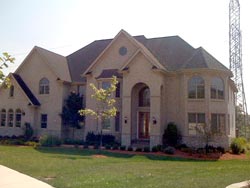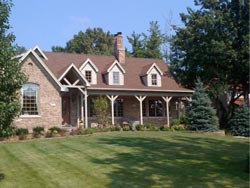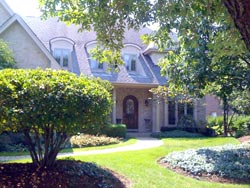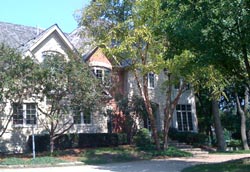|
|
|
|
|
|
|
|
Chicago’s annual real estate-charts in its October 2009 issue (which hits newsstands this week) reveal lots of declines in both sale prices and the number of homes sold in 288 Chicago neighborhoods and suburbs. But one decline demands a closer look: what happened in Burr Ridge? That suburb is one of just two towns that this year dropped out of the elite group of towns and neighborhoods that have an average sale price of $1 million or more.
In our October 2008 chart, 15 towns or suburbs had house prices that averaged $1 million or more. But this year, both Northfield and Burr Ridge have fallen off that list. (So have Bannockburn and Mettawa, but on a technicality: there were no sales recorded in either of those towns during our tracking year, which ended June 30, 2009.) Northfield’s house prices had averaged just over $1 million in 2008, and it’s just under that line now.
Prices in Burr Ridge, on the other hand, took a 29.8 percent drop, from an average of $1,127,704 last year to $794,093 this year. It’s not the biggest drop in the region, but it’s by far the biggest among the $1-million club, a category Burr Ridge first joined in our October 2007 issue.
“Historically, Burr Ridge has been more subject to mood swings” than such neighboring towns as Hinsdale and Western Springs, says Bryan Bomba, a Re/Max Elite agent who works that section of the western suburbs. “It’s had the higher highs and the lower lows.” That’s borne out by the price of houses in Burr Ridge on our charts over the boom years of this decade: some years, prices barely rose, and at other times they soared.
Several factors may influence Burr Ridge’s “moodiness.”
- The town is served by four different school districts of varying calibers. The far northern tip, where children attend the high-performing Hinsdale schools, hasn’t seen much of a real-estate downturn, but it’s a very small piece of the town, situated mostly between 59th and 63rd streets.
- Metra does not serve Burr Ridge. “The train towns have more of the boutiquey feel that people always want,” Bomba says. As prices dropped everywhere and those towns became more affordable, not as many buyers were forced to settle for their second-choice town. (With its big lots, less busy streets, and easy expressway access, Burr Ridge is clearly a first choice for many people; for others it’s the less-expensive alternative to Hinsdale.)
- In the past several years, builders have developed dozens of new houses in what had been semirural sections of Burr Ridge, particularly south of 87th Street. Like many new-construction districts, those neighborhoods have been hard hit by the economic downturn. In the first six months of 2009, one-third of the sales in Burr Ridge were foreclosures or short sales—and six of those eight were in the southern part of town.
But there are signs that Burr Ridge’s average price may rise sharply, and soon.
- Since July 1st—the start of the year we will report on in our October 2010 issue—there have been 20 sales in town, just three of them distressed sales. That’s less than half the proportion for the first six months of 2009.
- And late last week, Beth Burtt, whose Brush Hill agency covers Burr Ridge, told me she counted 19 sales pending in the suburb (those are houses with sales contracts in place that have yet to close); those pending deals have an average sale price of $1,117,797. Any of those contracts could fail to go through, but at the moment, Burtt noted, “it looks like Burr Ridge might be out of the trough it was in [earlier] this year.”







